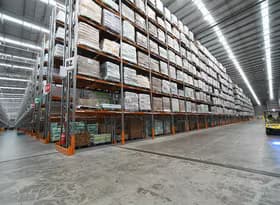
Economy’s recovery on ice as trade war hits growth
The emerging international trade war has created uncertainty about global growth prospects and US trade and foreign policy, which could knock as much as 1.4 percentage points off New Zealand’s GDP growth during 2026, according to Infometrics’ latest economic forecasts. The company has revised its predictions for GDP growth next year down from 2.4% to 1.0%pa, with exports set to be negatively affected by the weaker global economy, flowing through into more caution around business investment and household spending as well.
“There is an incredibly high level of uncertainty around the global economy at the moment, with a mounting probability of a global recession due to the tariffs proposed by US President Trump,” said Infometrics Chief Forecaster Gareth Kiernan. “The blanket tariffs of 10% announced for all imports to the US, alongside the much higher tariffs imposed on China, are set to significantly slow economic growth in the world’s two largest economies. The ‘on again, off again’ nature of the tariffs is also creating a difficult environment for businesses to make investment and hiring decisions with any confidence.”
New Zealand’s growth in exports could slip towards zero over the next 18 months as international demand softens, and the purchasing power of overseas businesses and consumers is hit by higher costs due to tariffs. Strong demand and high prices for New Zealand exports during 2025/26 was set to be a key driver of New Zealand’s recovery from recession going forward, and better export incomes had looked likely to make an even bigger contribution to the economy’s pick-up than declining mortgage rates.
“Faced with this weaker economic outlook, the balance of risks has tilted towards further interest rate cuts by the Reserve Bank,” says Mr Kiernan. “However, given the lower exchange rate and the potential for higher imported inflation, we forecast that inflation will push up to 2.8%pa later this year. As a result, we expect the Bank to cut the official cash rate to 3% by July, but any further reductions will be dependent on expectations for lower, more favourable inflation outcomes.”
There had been hopes that the patchy recovery that had been occurring in the New Zealand economy in late 2024 and early 2025 would gain momentum and become more widespread as this year went on. All bets are now off given the chaos on international financial markets over the last few weeks, and a more robust recovery could now be as far away as 2027. “We’re conscious that the ground has shifted rapidly over the last two weeks and could continue to do so,” says Mr Kiernan. “This forecast represents our current assessment of the outlook for the New Zealand economy, but we’re alert to the fact that the outcomes of global economic instability, and people’s reactions to this changing environment, will continue to evolve.”
“The trade war has highlighted New Zealand’s reliance on exporting to generate sustained economic growth and our dependence on China as an export market. Most Kiwis will not be directly affected by American trade policy, but the implications of a global downturn are potentially wide-reaching outcomes for more tangible areas such as the New Zealand labour market and housing market. The global volatility could not have come at a worse time, given that New Zealand was just starting to emerge from two years of flat or declining economic activity.”
ENDS
More details about Infometrics forecasts can be found on the respective Building and Transport forecasts pages on the Infometrics website.








